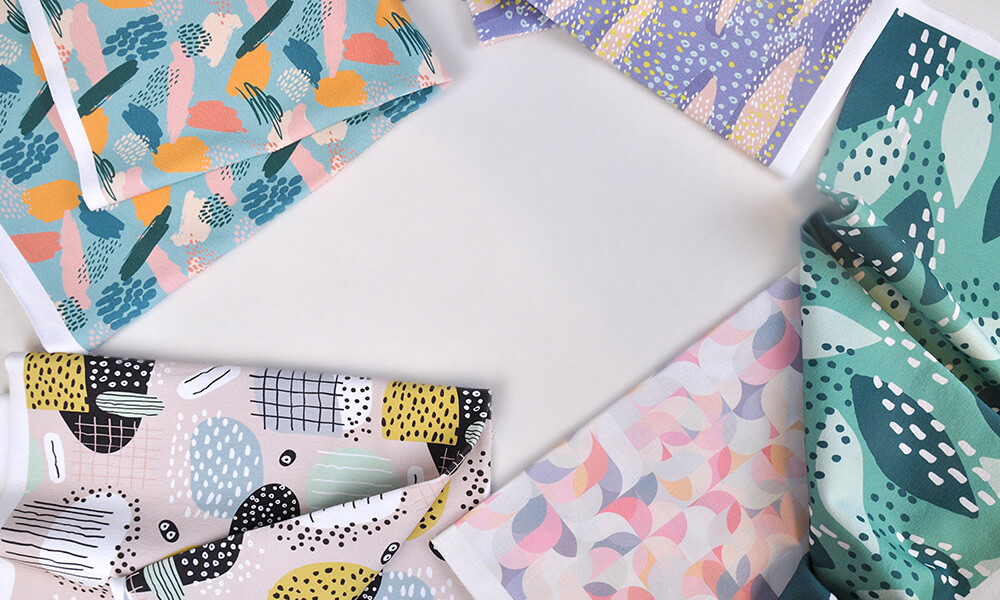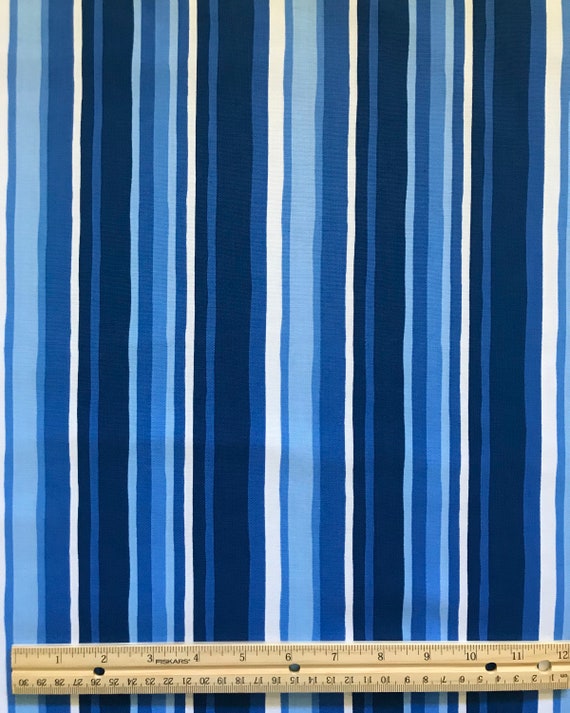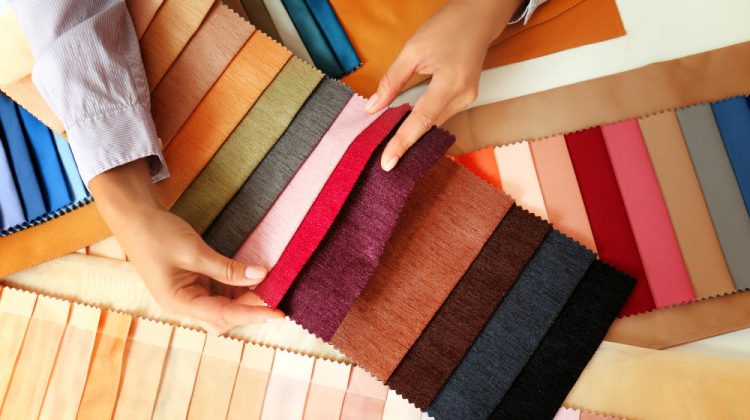All 4 Way Stretch Fabrics Fundamentals Explained
All 4 Way Stretch Fabrics Fundamentals Explained
Blog Article
The Only Guide for All 4 Way Stretch Fabrics
Table of ContentsThe Ultimate Guide To All 4 Way Stretch FabricsSee This Report about All 4 Way Stretch FabricsA Biased View of All 4 Way Stretch FabricsSome Ideas on All 4 Way Stretch Fabrics You Need To KnowA Biased View of All 4 Way Stretch FabricsLittle Known Questions About All 4 Way Stretch Fabrics.The Buzz on All 4 Way Stretch Fabrics
As I likewise desire UV defense from my garments when I go out, I would certainly select a largely woven cotton textile. One more consideration when getting the fabric is the means it will certainly after cleaning.A risk-free bet would certainly be to acquire at least 10% additional textile. If you can acquire preshrunk textile, this is the finest.

If you are matching the shade, like selecting the cellular lining for the primary textile or picking material to add as trim, this is specifically crucial. The material showrooms will typically have a light well where you can see the material in sunlight (or a window with good light from outdoors).
The 25-Second Trick For All 4 Way Stretch Fabrics

A lot of fabrics have to do with 44 large. When you go to purchase fabric, price quote how a lot you desire first and afterwards most likely to the store. Check out this article to know the solution to this often listened to inquiry "Just how much material do I require". With a fat quarter, you will certainly get an 18 wide by 22 long.
These are offered in the shops I regular as cut pieces they are mainly valued low and some of them, when they are last off the bolt, treasured very reduced. You will certainly have to ask the salesmans for items like that. Some wonderful deals can be had by doing this. In dressmaking, we get material by the yard/meter.
3 Easy Facts About All 4 Way Stretch Fabrics Explained
In a quarter of a lawn, you get a 9 by 44 strip of fabric, which is about 22 cm in length. It is constantly much better to buy bigger cloth. According to the size of textiles, they may be called single-width and double-width. Solitary size is normally up to 49 inches in size and dual size approximately 60.
You can find out more concerning backyard to meter conversion right here. Have a look at this article on reading a tape measure Select textiles that are not as well tough or rigid, or you wouldn't fit in them. Linen, Jeans, flannel, For cooler climates, choose wool (100% along with wool blends) woollen tweeds, woollen crepe; it basically relies on what pants you are speaking about Tailored pants, Unstructured Pant, Combined, Jeans.
All cotton textiles are excellent for youngsters. Knit textiles are likewise great for youngsters you can go for woollen knits.
The smart Trick of All 4 Way Stretch Fabrics That Nobody is Discussing
Inspect out this blog post on the very best fabric for clothing for babies and children for even more detail on this topic. Light-weight cotton is my favored to sew skirts. Cotton yard cloth in attractive prints is terrific. Silk jersey is a fantastic fabric for sewing skirts, as is Ponte Roma knit textile.
Likewise, drapey rayons, soft woollen, lycra blends, and stretch velours are all suitable for sewing skirts. Wool (Woollen crepe has a terrific drape and gives adequate framework for coats; woollen tweeds are terrific too), Linen & Flannel. Velour (Take A Look At the slouchy velour sports jacket tutorial, incidentally). Lightweight knits benefit free-flowing coats like this waterfall jacket pattern Raw silk, satin, taffeta, velour, Shoelace, silk chiffon, and Organza are all terrific for making outfits.
You can buy medium-weight fabrics with some spandex/elastane included for a suitable bodycon-type dress. For drapey outfits, you can pick lightweight materials. Jacket has a drapey fit similar to this. Crepe, challis, and charmeuse are all drapey materials matched for this style. Take a look at these posts: Finest fabric for making casual dresses and tops; Names of different outfits. Rayon, Acetate, and cotton lining materials are widely used.
Light-weight cotton material, Cambric, Chintz, Twill, Faille, Seersucker, Poplin, lightweight woven broadcloth, batiste, bed linen, eyelet are great for making t-shirts and shirts. Smooth satin material is good for making airy tops. When getting patterned textile (most of the formed fabric comes with a width of 45 or 54 inches), there will be pattern repeat in these fabrics, and this need to be taken right into consideration when cutting textile as well as getting them i.e., if you desire to match the patterns at the seams.
An Unbiased View of All 4 Way Stretch Fabrics
The themes will be dispersed in a scheduled fashion on the fabric. You might discover in some cases If the print is not placed on the textile properly, it can not be matched or lined up when built without distorting the fabric and the hang of the garment.


You can find out more concerning grain and grainline of fabric right here. The textile weight depends on several elements like the weave, fiber kind, etc and is typically signified by GSM. GSM can differ from 60 -700; 700 being the GSM of very high-grade woolen fabric. A denim material has a GSM of 400, depending on the weave.
Yet something you have to keep in mind is that greater textile weight does not denote greater fabric quality (breeches fabric). It just is a sign of the suitability of the textile for a specific job. You can pass by high material weight textile denim for a light-weight drifting shawl. Understanding the textile weight serves when comparing the very same sort of materials, but also this will depend upon its application.
Look into the list of the 70+ different textile finishes and treatments. Essentially, one of the most crucial criteria to search for in the textile you buy are as follows. The variety of strings per inch of material (yarns-per-inch). Higher the thread count greater the variety of threads woven per inch, and the higher the top quality.
What Does All 4 Way Stretch Fabrics Mean?
This is extremely vital in any fabric. In high-grade fabric, this balance (either in numbers or in size) will always be maintained. Processes utilized on material to enhance appearance and performance. The fibers that are try here woven to make the material will either be as a single hair or will certainly be formed by integrating two yarns (twisted).
A two-ply thread is exceptional to a single-ply yarn.
If you are obtaining prepared to start a new embroidery job, picking a material will certainly be the most vital action as soon as you determine what you desire to make. After you've gone to all the problem and expenditure of purchasing the stitching maker you love, a pattern you like, and a textile you enjoy, you want the ended up product to be a success, right? One means to complete that is to begin by making certain your fabric is genuinely appropriate for the task.
The Ultimate Guide To All 4 Way Stretch Fabrics
If you're making a quilt, you'll instantly desire to utilize quilter's weight cotton for finest results. What if you desire to make a product of apparel? How do you recognize which fabric will provide you the finest result? Choosing a textile merely since you like the print or style on it isn't necessarily the finest method.
In order to avoid doing a whole job for virtually nothing, we have actually compiled some tips to help you determine which textile is ideal for your project. Let's say you already have a project in mind; exactly how do you discover the right material for it?
Believe of the characteristics you desire the finished product to have. If clothes, will it be fitted or loose? Dressy or daily? For cozy climate or cold? Do you want a solid color or a print? If you are making a non-wearable product such as a pillow cover or pot holder, use a strong material such as canvas.
There is a lot information available concerning fabrics, their qualities, and their usages, it might reach be frustrating! Don't try to take it in all at as soon as; simply start with the project at hand. Find out all you can regarding the textile you utilize for this job.
Report this page